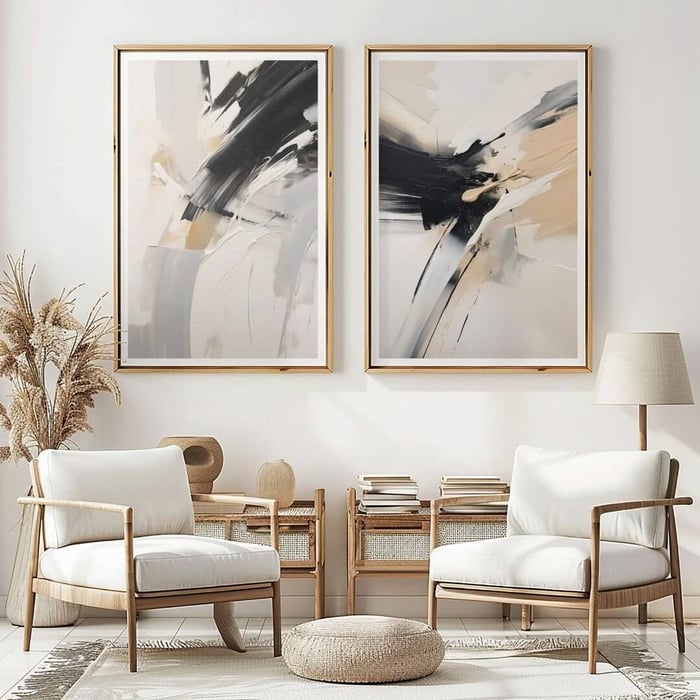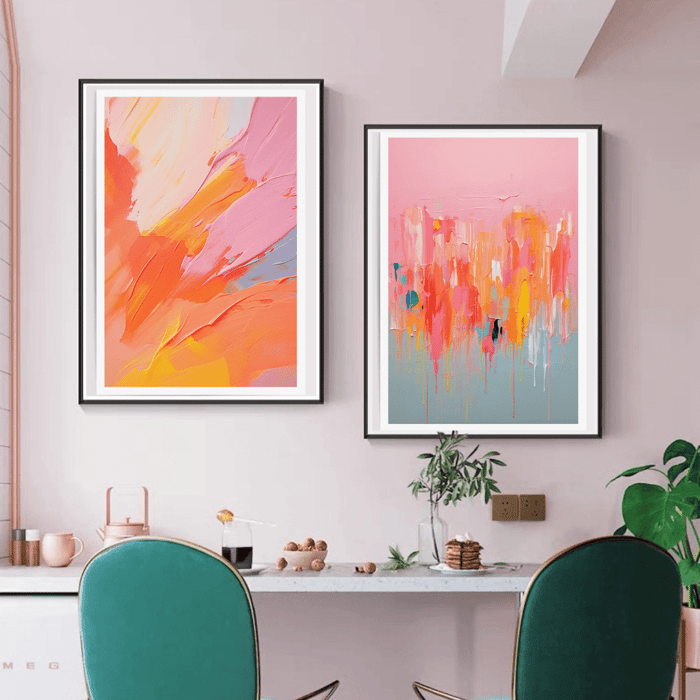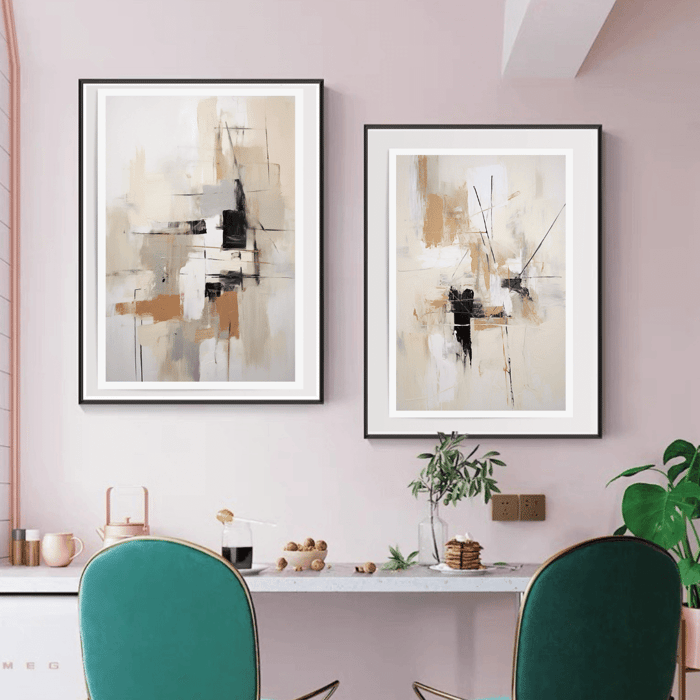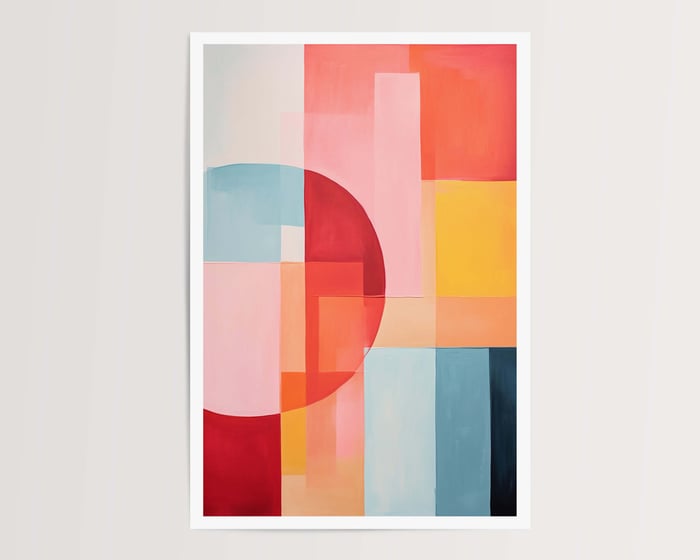History, Meaning & Design
The mystery of abstract art is an exciting and expressive form of creativity that speaks to people in different ways. Instead of depicting recognizable images, it uses colors, shapes, and forms to create emotion and meaning. But where did this movement come from, and why do so many people love it?
This blog takes you through the history of abstract art, its most famous artists, and how it fits perfectly into modern interior design.
A Brief History of Abstract Art
Early Influences and Foundations
The mystery of abstract art has been present in artistic expression for centuries, but the movement truly began in the late 19th and early 20th centuries. With changes in philosophy, science, and technology, artists wanted to move beyond traditional art and explore new forms of expression.
One of the earliest pioneers of abstraction was Wassily Kandinsky, a Russian artist who believed that art should trigger emotions rather than just depict reality. His paintings, such as Composition VII (1913), are filled with vibrant colors and dynamic forms that invite different interpretations.
The Rise of Abstract Movements
Several movements contributed to the growth of abstract art:
Cubism (1907-1914): Led by Pablo Picasso and Georges Braque, Cubism broke objects into geometric shapes and multiple perspectives, paving the way for non-representational art.
Futurism (1909-1944): This movement, led by Umberto Boccioni, celebrated speed, energy, and movement, often using abstract techniques.
Suprematism (1913-1920s): Founded by Kazimir Malevich, this Russian movement focused on simple geometric forms and pure artistic feeling, as seen in Black Square (1915).
De Stijl (1917-1930s): Developed by Piet Mondrian and Theo van Doesburg, this movement sought harmony through grids, primary colors, and straight lines.
Abstract Expressionism and Beyond
Following World War II, the mystery of abstract art evolved further, particularly in the United States. Abstract Expressionism emerged in the 1940s and 1950s, emphasizing emotion and spontaneous brushstrokes. Artists like Jackson Pollock, with his drip paintings, and Mark Rothko, known for his color field works, took abstraction to new levels.
Over time, abstract art continued to evolve, influencing Minimalism, Op Art, and modern digital creations, constantly pushing creative boundaries.
Why Is Abstract Art So Appealing?
Emotional and Personal Connection
The mystery of abstract art lets people feel emotions without showing specific images. A painting by Rothko, for example, might create a feeling of peace for one person and sadness for another. Everyone experiences abstract art in their own way.
Freedom of Interpretation
Since abstract art doesn’t depict exact images, people can see whatever they want in it. Two viewers may stand before the same painting and come up with completely different meanings. This freedom makes abstract art endlessly fascinating.
A Break from Traditional Norms
For artists, abstract art provides a creative escape from traditional rules. They can experiment with colors, textures, and patterns without being limited by realism, resulting in new and exciting artistic expressions.
Timeless and Universal Appeal
Unlike traditional art tied to specific historical or cultural moments, abstract art speaks to people everywhere. Whether seen in a museum in New York or a café in Tokyo, its emotional and conceptual themes remain universal.
Abstract Art in Modern Interior Design
The mystery of abstract art is not just for museums—it plays a huge role in interior design. Many people choose abstract pieces to enhance their homes, offices, and public spaces because it brings personality and style to any environment.
Adding Color and Energy
Abstract paintings can inject energy into a room with bold colors and dynamic shapes. Whether you prefer bright, vibrant pieces or softer, neutral tones, abstract art can set the perfect mood for your space.
Creating a Focal Point
A well-placed abstract painting or print can become the centerpiece of a room, drawing attention and sparking conversation. It’s a simple way to add personality and uniqueness to your home.
Versatility in Style
One of the best things about abstract art is its adaptability. Whether your space is minimalist, bohemian, industrial, or classic, an abstract piece can complement the design. Large, colorful canvases work well in modern spaces, while soft, textured abstracts add warmth to cozy interiors.
Making Small Spaces Feel Bigger
In small rooms, abstract art can create the illusion of space. Lighter colors and open compositions make a room feel airier, while large-scale abstracts can add depth and interest without cluttering the space.
Personal Expression
Since abstract art is open to interpretation, choosing a piece for your home allows you to express your personality. Whether it's a print, canvas, or mural, it reflects your tastes and emotions, making your space feel truly personal.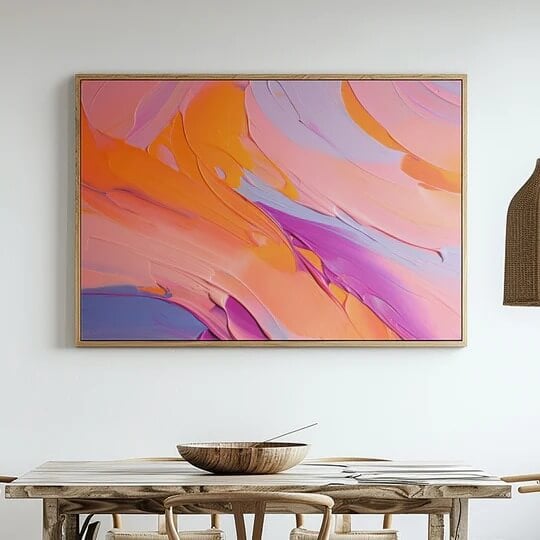 Happy Aura Art Print is a great example of colourful abstract art.
Happy Aura Art Print is a great example of colourful abstract art.
The Subjectivity of Abstract Art
Because abstract art doesn’t depict specific objects, it invites different interpretations. Some people see movement and chaos, while others find peace and harmony. This subjectivity makes abstract art so intriguing—it reflects the complexity of human emotions and thought.
Some critics argue that abstract art lacks meaning or skill, but this perspective misses the point. Many abstract artists spend years mastering their craft before creating their work. The beauty of abstract art lies in its ability to communicate without words, letting viewers connect with it in their own way.
The mystery of abstract art has transformed the world of creativity, inspiring artists and art lovers for generations. From early pioneers like Kandinsky and Picasso to modern digital creators, abstract art continues to evolve and captivate audiences worldwide.
Its ability to evoke emotions, encourage interpretation, and enhance interior spaces makes it one of the most powerful and versatile forms of artistic expression. Whether you’re looking for a stunning piece for your home, creating your own abstract masterpiece, or simply appreciating the beauty of the movement, abstract art offers endless possibilities.
For those looking to bring the mystery of abstract art into their lives, whether through prints, paintings, or decor, the journey is deeply personal. Each brushstroke, each color choice, and each composition tells a story—one that is waiting to be explored and felt in countless ways.
Keep decorating

